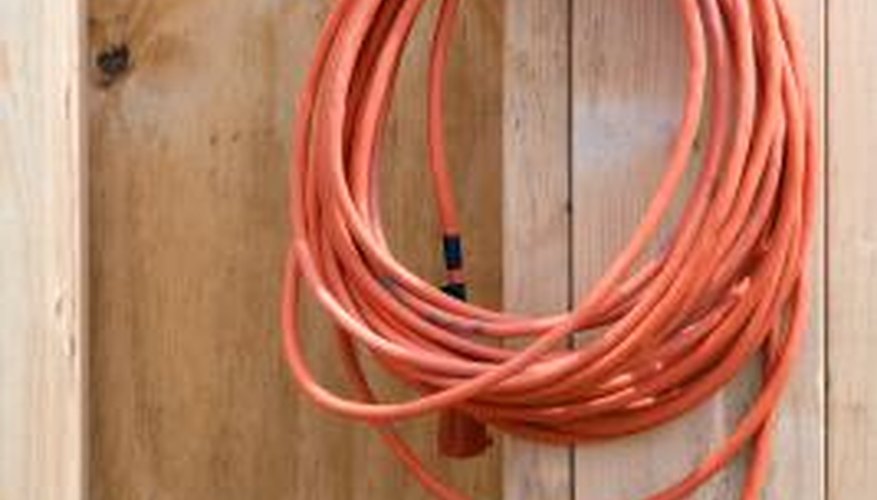Electrical wire insulation for lamp and appliance cords is made from flexible polyvinyl chloride, and electrical house wiring insulation consists of a thermoplastic, high-heat nylon material. The insulation covers the wire, and it can be damaged through everyday use. As long as the copper conductors inside the wires are not damaged, however, the insulation is repairable. Different kinds of insulation require different kinds of repair. Not repairing insulation can lead to additional damage to the insulation and damage to the copper conductors.
- Electrical wire insulation for lamp and appliance cords is made from flexible polyvinyl chloride, and electrical house wiring insulation consists of a thermoplastic, high-heat nylon material.
- The insulation covers the wire, and it can be damaged through everyday use.
Look at the electrical wire where the insulation is damaged. If the wire is nicked or cut, repair the wire before repairing the insulation.
Slide heat-shrink tubing over the damaged insulation area if the wire is not part of an electrical extension cord or power cord. Use a blow dryer or a heat-shrink gun to shrink the tubing onto the wire. Then wrap the tubing with electrical tape.
- Slide heat-shrink tubing over the damaged insulation area if the wire is not part of an electrical extension cord or power cord.
Paint liquid electrical tape over damaged insulation on heavy-duty extension cords. Allow the liquid electrical tape to dry for the time specified on the product's label. Wrap the dried liquid electrical tape with regular electrical tape.
Wrap damaged insulation with electrical tape on small cord repairs, such as lamp cords and small appliance cords.
